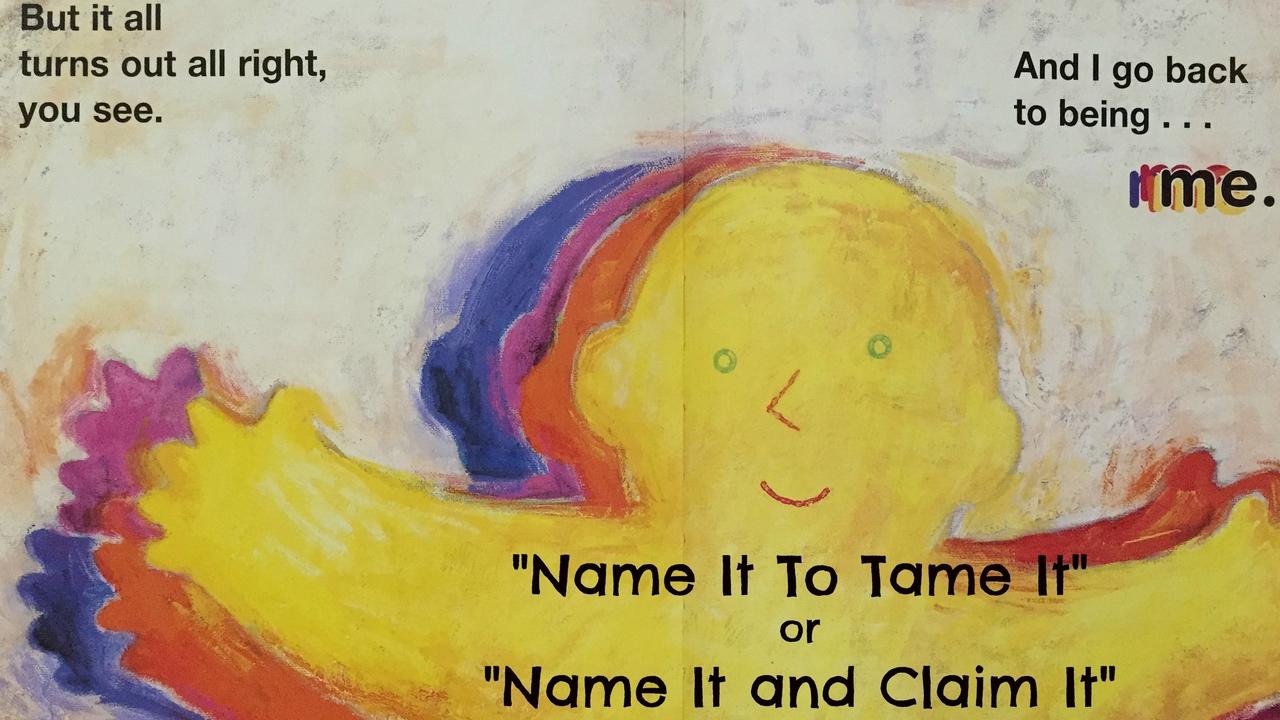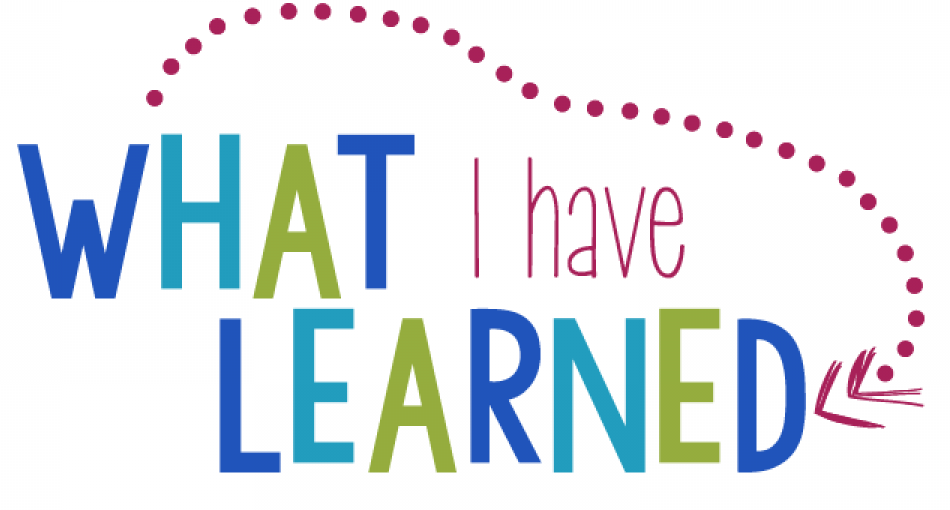Name It to Tame It

Name it to Tame it.
This quote was mentioned today by a wonderful friend and colleague. The phrase was coined by Dan Siegal, author of The Whole-Brain Child.
This phrase came up today in a conversation about children and emotions.
I have been talking a lot about emotions in class recently so thought it was worth putting some thoughts down for you in the hope they might support you and your kids - either at home or school!
Here is what I have learned from working with little humans for over 20 years:
If you have children, work with children or interact with children in any way - you will, inevitably, be dealing with little kids and their big emotions.
This is what I know:
Every single person on the planet experiences the SAME emotions. Everyone!
We all filter our emotions through different experiences but the emotions are the same.
Anger - Frustration - Sadness - Joy - Happiness - Fear - Nervous - Impatient - Embarrassed - Confused - Scared - Curious - Nervous - Disappointed
I used to be a slave to my emotions. Particularly around frustration/anger, fear and impatience.
![]() When I experienced frustration or anger, I held onto it. I would voice it. You would see it, hear it and feel it with me and if you are someone who knows me - you will know that I do NOT have a poker face! Even though now, I am completely different in dealing with my own emotions, I still have no poker face! I just don't stay there for very long! But I would hold onto it long enough to spiral into procrastination and then avoid things completely. Not healthy!
When I experienced frustration or anger, I held onto it. I would voice it. You would see it, hear it and feel it with me and if you are someone who knows me - you will know that I do NOT have a poker face! Even though now, I am completely different in dealing with my own emotions, I still have no poker face! I just don't stay there for very long! But I would hold onto it long enough to spiral into procrastination and then avoid things completely. Not healthy!
![]() When I experienced fear, I held onto it. It gave me the excuse for not stepping out of my comfort zone. It allowed me to place the blame for not doing anything, on someone or something else. It allowed me to stay safe but not grow.
When I experienced fear, I held onto it. It gave me the excuse for not stepping out of my comfort zone. It allowed me to place the blame for not doing anything, on someone or something else. It allowed me to stay safe but not grow.
![]() When I experienced impatience, I held onto it. It allowed me to say what I want without thought. It allowed me to hold on to the illusion of being in control when I was not. It resulted in me being short-tempered with myself and others and then ultimately fed into my frustration. A lovely vicious cycle all around!
When I experienced impatience, I held onto it. It allowed me to say what I want without thought. It allowed me to hold on to the illusion of being in control when I was not. It resulted in me being short-tempered with myself and others and then ultimately fed into my frustration. A lovely vicious cycle all around!
BUT...with all of these emotions - I did not once have ever tell myself or anyone else what I was feeling. It just became known and heard through my words and my actions and it created pain - not just for myself but also for those closest to me.

![]() Whatever our experiences are - we give them a meaning.
Whatever our experiences are - we give them a meaning.
![]() The meaning we give them determines the emotions we attach them.
The meaning we give them determines the emotions we attach them.
![]() The emotions become what we focus on and where our energy goes.
The emotions become what we focus on and where our energy goes.
![]() Emotions can hurt because they are real. They can hurt because the experience mattered.
Emotions can hurt because they are real. They can hurt because the experience mattered.
![]() Acknowledging the emotions we experience is the first step we all need to take.
Acknowledging the emotions we experience is the first step we all need to take.
![]() With our little humans, there is usually an emotion behind the behaviour that we are seeing.
With our little humans, there is usually an emotion behind the behaviour that we are seeing.

![]() How mindful are you of your own emotions?
How mindful are you of your own emotions?
![]() Do you take the time to name the emotion or acknowledge the feelings that come up for you?
Do you take the time to name the emotion or acknowledge the feelings that come up for you?
![]() Do you sometimes judge yourself for having particular emotions at particular times?
Do you sometimes judge yourself for having particular emotions at particular times?
![]() How long do you stay in the emotion and how do you shift yourself out of it?
How long do you stay in the emotion and how do you shift yourself out of it?
![]() Do you have any strategies that help you shift emotions quickly?
Do you have any strategies that help you shift emotions quickly?
You might already know and use these steps, but in case you need some ideas, here is what I do, when dealing with little humans and their big emotions:
![]() Name it to tame it. I always, ALWAYS acknowledge the emotion that I am seeing. If I am unsure, I ask.
Name it to tame it. I always, ALWAYS acknowledge the emotion that I am seeing. If I am unsure, I ask.
I can see you are feeling frustrated. That's okay. It's okay to feel frustrated or annoyed. I feel like that too when ...[whatever example fits the situation]. It's okay to feel this way but it's important we don't stay feeling this way for too long.
![]() Recognise the signs. Teach your children to recognise their body's physical response when they experience the emotions they have.
Recognise the signs. Teach your children to recognise their body's physical response when they experience the emotions they have.
Calm the breath. Slow the breathing. Relax the shoulders. Relax the body. You are safe. You are okay.
![]() Release negative emotions. Teach your children that while it is definitely okay to feel this way, it is very important that we don't stay in that emotion because it stresses our bodies and makes it hard to think and learn effectively.
Release negative emotions. Teach your children that while it is definitely okay to feel this way, it is very important that we don't stay in that emotion because it stresses our bodies and makes it hard to think and learn effectively.
![]() Step it back. The process of problem-solving and stepping back helps our kids to understand where the emotion started from. This is just as important as naming the emotion. Without stepping back and problem-solving, kids do not always know or recognise where the emotion came from. This is perfect for assisting in recognising the real emotion and acknowledging it as well.
Step it back. The process of problem-solving and stepping back helps our kids to understand where the emotion started from. This is just as important as naming the emotion. Without stepping back and problem-solving, kids do not always know or recognise where the emotion came from. This is perfect for assisting in recognising the real emotion and acknowledging it as well.
An example from my classroom today -
One student pushes another. When I spoke with her, she was honest and acknowledged what she had done. I asked her what was happening at the time and she said she did not know. So I ask my standard question - 'If you did know what was happening, what would you say?'
Next, we get to Step Back - the second student had made a comment to her about not being fair and she felt like it was untrue. I asked how she felt when that was happening and she said she felt frustrated because she didn't feel like she was doing anything unfair.
Next, we Problem Solve - It's perfectly okay for you to feel frustrated. I would too if I felt like I was doing the right thing and someone thought I wasn't. What is something you could have done instead of pushing her when you felt frustrated with her? The response was - use my words and talk to her, come to you to help us problem solve or talk to the others in the group. All very valid options. Following this, all three of us spoke together to acknowledge what had happened and the emotion that was felt. In this process, we talk about empathy and understanding and what we could do next time. If both parties are happy with the solution, then we continue on with our day.
This takes all of about 5-10 minutes max and makes a major difference in how kids continue to learn and move through their day.
![]() The choice - Understand that if you continue to hold on to negative emotions - it is a choice. Feelings are just visitors. We need to learn how to let them come and then let them go. Going through the process of problem-solving and naming them is the ONLY way to help make the choice easier. Especially for our little humans!
The choice - Understand that if you continue to hold on to negative emotions - it is a choice. Feelings are just visitors. We need to learn how to let them come and then let them go. Going through the process of problem-solving and naming them is the ONLY way to help make the choice easier. Especially for our little humans!
![]() Emotional pain is something that should never be hidden away.
Emotional pain is something that should never be hidden away.
![]() Don't be too quick to judge the behaviour or actions you see from your child. Go through the process of seeing and understanding and learning to recognise, and most importantly teach THEM to recognise, the emotions behind their behaviours.
Don't be too quick to judge the behaviour or actions you see from your child. Go through the process of seeing and understanding and learning to recognise, and most importantly teach THEM to recognise, the emotions behind their behaviours.
There is truth in our pain, there is growth in our pain but only if is first brought out into the open.

Until next week....have a wonderful joyful week!
Clarissa xo
Stay connected with news and updates!
Join our mailing list to receive the latest news and updates from our team.
Don't worry, your information will not be shared.

